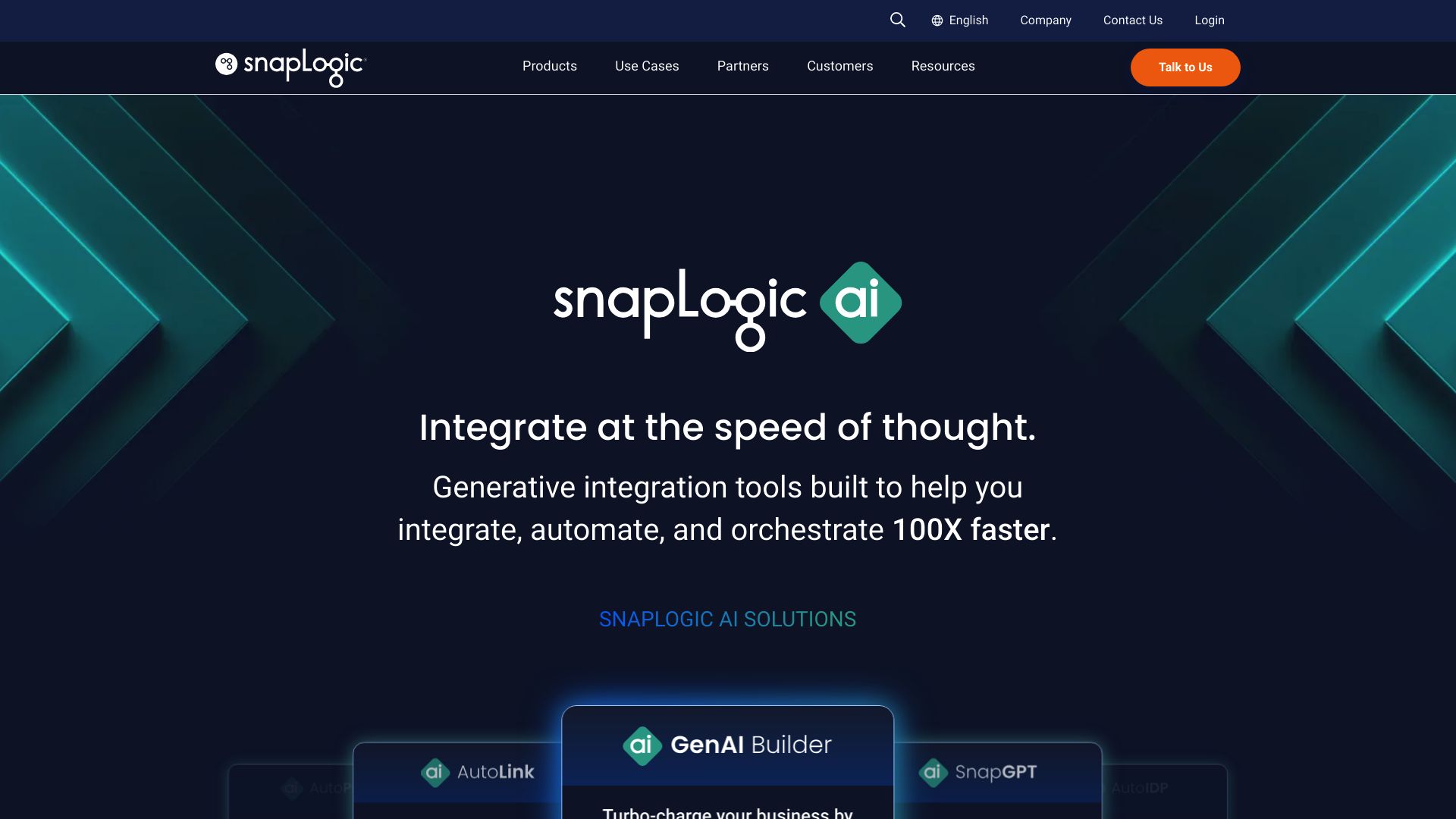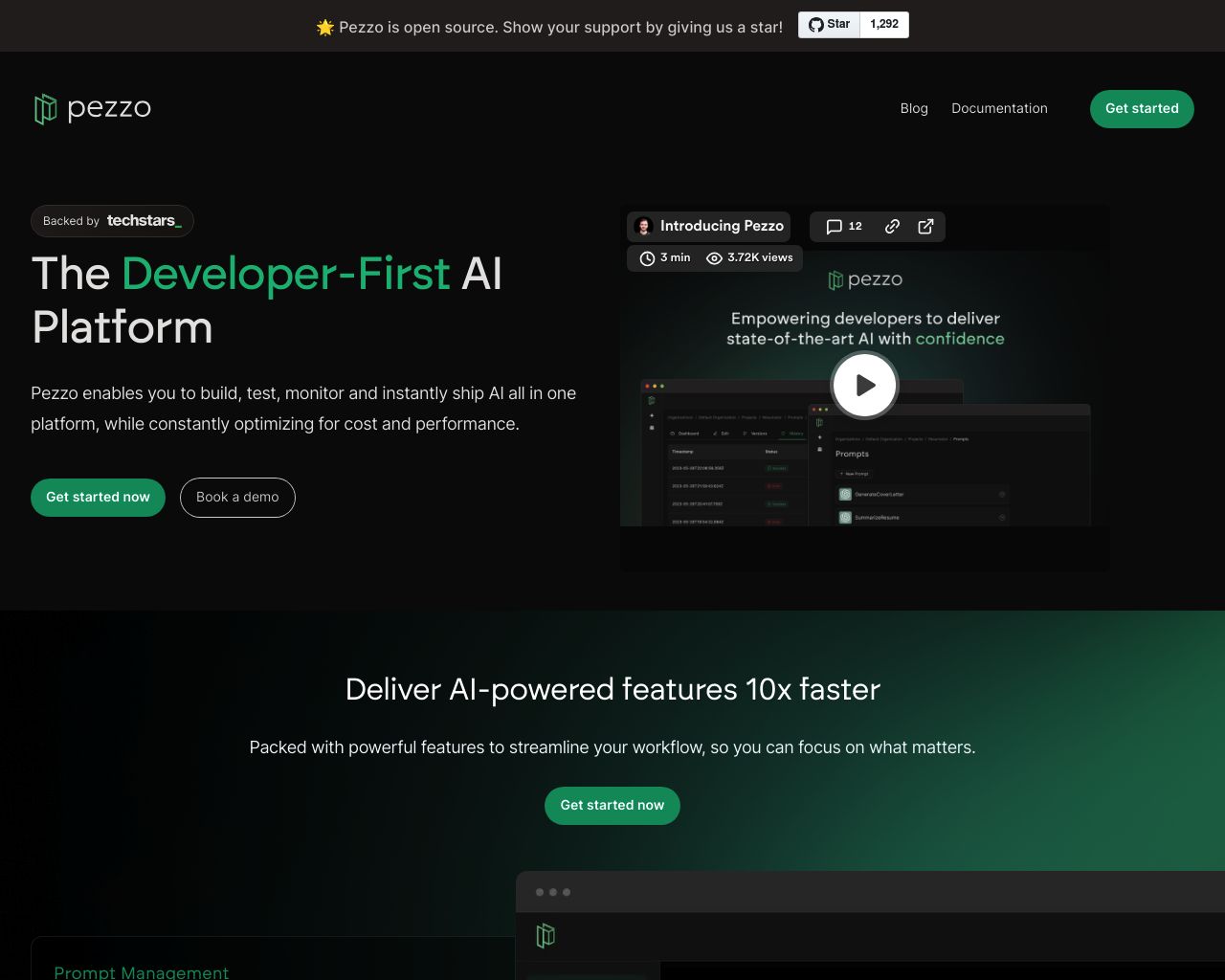SnapLogic AI vs. Pezzo: Comparing Enterprise Integration and AI Development Tools
AI development platforms have become essential tools for businesses seeking to harness the power of artificial intelligence. This comparison explores three leading solutions: SnapLogic AI vs. Pezzo, and SmythOS. SnapLogic AI excels in enterprise data integration, offering robust connectors and AI-powered workflows. Pezzo streamlines AI development with specialized tools for prompt management and optimization. SmythOS emerges as a comprehensive platform, combining powerful integration capabilities with intuitive AI workflow creation. We’ll examine how each platform addresses key challenges in AI development, from scalability and security to collaboration and cost optimization. By the end of this comparison, you’ll have a clear understanding of which solution best fits your organization’s AI ambitions.
snapLogic AI Overview
snapLogic AI provides an Intelligent Integration Platform (IIP) that leverages AI-powered workflows to automate enterprise IT integration projects. The platform caters to both expert developers and citizen integrators, enabling them to manage application and data integration across on-premises, cloud, and hybrid environments.


SnapLogic’s platform stands out with its AI-driven capabilities, including the Iris AI technology, which offers intelligent recommendations for building data pipelines. The self-service HTML5 interface simplifies integration tasks for users across various technical skill levels. SnapLogic supports a wide array of data types and sources, using “Snaps” as pre-built connectors to streamline integration with SaaS and on-premises applications.
SnapLogic supports a wide array of data types and sources, using “Snaps” as pre-built connectors to streamline integration with SaaS and on-premises applications.
Scalability is a key feature of SnapLogic, leveraging Amazon’s EC2 infrastructure to adjust computing power based on enterprise needs. This elastic integration approach optimizes resource consumption and data proximity. Recent additions like SnapGPT and GenAI Builder extend the platform’s capabilities, enabling no-code development of AI applications and chatbots using natural language prompts.
While SnapLogic offers robust features for enterprise integration, users should consider potential challenges. Complex integrations with legacy systems may require specialized knowledge. Additionally, as with many AI-powered platforms, users need to be mindful of data privacy and security concerns, especially when handling sensitive information across various environments.
Pezzo Overview
Pezzo empowers developers to create, manage, and optimize AI applications with unprecedented efficiency. This open-source toolkit streamlines prompt design, version control, and collaboration for AI development teams. Pezzo’s visual interface simplifies complex AI workflows, allowing developers to focus on innovation rather than infrastructure.
Pezzo’s standout features include effortless prompt management and version control. These tools accelerate AI solution delivery by enabling developers to iterate quickly on prompts and maintain a clear history of changes. The platform’s A/B testing and targeting capabilities help teams refine their AI models, potentially boosting conversion rates and overall performance.
Cost optimization is another key benefit of Pezzo. By providing tools to analyze and improve AI operation efficiency, the platform claims to help users reduce costs by up to 50%. This cost-saving potential makes Pezzo an attractive option for businesses looking to maximize their AI investment.
Pezzo empowers developers to create, manage, and optimize AI applications with unprecedented efficiency. This open-source toolkit streamlines prompt design, version control, and collaboration for AI development teams.


Pezzo’s comprehensive troubleshooting capabilities set it apart from many competitors. The platform offers execution history, time-travel debugging, and test suites, enabling developers to deploy AI models with confidence. These features provide detailed insights into AI operations, reducing debugging time and improving overall productivity.
The platform’s focus on collaboration and transparency enhances team productivity. By offering clear visibility into AI operations, Pezzo helps teams understand exactly what happened, when, and where. This level of insight is crucial for efficient operations and effective problem-solving in complex AI projects.
While Pezzo offers many advantages, it’s important to note that as a relatively new platform, it may not have the extensive ecosystem of some more established competitors. However, its open-source nature and upcoming cloud service suggest a strong potential for growth and community-driven innovation in the near future.
Feature Comparison
SnapLogic AI and Pezzo offer distinct approaches to AI development and integration. SnapLogic AI focuses on enterprise-level data integration with AI capabilities, while Pezzo targets streamlined AI development workflows.
SnapLogic AI provides robust integration features for connecting various data sources and applications. Its Iris AI technology offers intelligent recommendations for building data pipelines. However, Pezzo excels in prompt management and version control specifically for AI development. Pezzo’s visual interface simplifies complex AI workflows, allowing developers to iterate quickly on prompts.
In terms of core components, SnapLogic AI offers a comprehensive suite of connectors (Snaps) for integrating with diverse systems and data sources. It supports both cloud and on-premises deployments. Pezzo, being more focused on AI development, provides advanced features like A/B testing and targeting for AI models. SnapLogic AI’s broader integration capabilities may be more suitable for enterprises with complex data ecosystems, while Pezzo’s specialized AI tools cater to teams focused on refining AI models and prompts.
Security-wise, both platforms offer encryption and authentication features. SnapLogic AI provides IP control and supports OAuth, crucial for enterprise environments. Pezzo, while offering security features, doesn’t explicitly mention IP control. SnapLogic AI’s enterprise focus results in more comprehensive security options compared to Pezzo’s streamlined approach.
While both platforms aim to enhance AI development efficiency, their distinct feature sets cater to different aspects of the AI workflow. SnapLogic AI’s strength lies in its extensive integration capabilities and enterprise-grade features, whereas Pezzo shines in its specialized tools for AI prompt management and optimization.
Feature Comparison Table
| snapLogic AI | Pezzo | SmythOS | |
|---|---|---|---|
| CORE FEATURES | |||
| Hosted Agents (Dev, Production) | ✅ | ❌ | ✅ |
| Visual Builder | ✅ | ❌ | ✅ |
| No-Code Options | ✅ | ❌ | ✅ |
| Memory & Context | ❌ | ❌ | ✅ |
| Autonomous Agents | ✅ | ❌ | ✅ |
| SECURITY | |||
| Constrained Alignment | ✅ | ❌ | ✅ |
| IP Control | ✅ | ❌ | ✅ |
| COMPONENTS | |||
| Foundation AIs | ❌ | ✅ | ✅ |
| Huggingface AIs | ❌ | ✅ | ✅ |
| Zapier APIs | ❌ | ✅ | ✅ |
| Classifiers | ❌ | ✅ | ✅ |
| Data Lakes | ✅ | ❌ | ✅ |
| DEPLOYMENT OPTIONS (EMBODIMENTS) | |||
| Staging Domains | ❌ | ✅ | ✅ |
| Production Domains | ❌ | ✅ | ✅ |
| Deploy as Site Chat | ❌ | ✅ | ✅ |
| Deploy as Scheduled Agent | ✅ | ❌ | ✅ |
| Deploy as GPT | ❌ | ✅ | ✅ |
| DATA LAKE SUPPORT | |||
| Hosted Vector Database | ❌ | ❌ | ✅ |
| Sitemap Crawler | ❌ | ❌ | ✅ |
| YouTube Transcript Crawler | ❌ | ❌ | ✅ |
| URL Crawler | ❌ | ✅ | ✅ |
Best Alternative to snapLogic AI and Pezzo
SmythOS leads the pack as the superior alternative to snapLogic AI and Pezzo for AI agent development and deployment. Our platform combines powerful features with unmatched ease of use, empowering users to create sophisticated AI solutions efficiently.
We offer a comprehensive visual builder that simplifies the creation of complex AI workflows. Unlike snapLogic AI’s focus on data integration or Pezzo’s emphasis on prompt management, SmythOS provides end-to-end support for AI agent development. Our drag-and-drop interface allows users to design, test, and deploy AI agents without extensive coding knowledge.
SmythOS stands out with its robust memory and context capabilities, enabling AI agents to maintain coherent, context-aware interactions.
SmythOS stands out with its robust memory and context capabilities, enabling AI agents to maintain coherent, context-aware interactions. This feature, absent in both snapLogic AI and Pezzo, significantly enhances the quality and relevance of AI-driven conversations and decision-making processes. Additionally, our platform supports autonomous agents that can operate independently, a critical feature for scaling AI solutions that neither competitor fully addresses.
We prioritize versatility in deployment options. While Pezzo offers some deployment flexibility, SmythOS goes further by allowing users to deploy AI agents as APIs, webhooks, scheduled tasks, chatbots, and even GPT models. This flexibility, combined with our scalable infrastructure, ensures that AI solutions built with SmythOS can adapt to diverse business needs and grow with your organization.
Our commitment to security and compliance sets us apart. We offer advanced features like constrained alignment and IP control, matching snapLogic AI’s enterprise-grade security while surpassing Pezzo’s offerings. These capabilities ensure that AI agents operate within defined parameters, maintaining data integrity and adhering to regulatory requirements.
Conclusion
SnapLogic AI, Pezzo, and SmythOS each offer unique approaches to AI development and integration, catering to different needs within the AI ecosystem. SnapLogic AI excels in enterprise-level data integration, providing robust connectors and scalable solutions for complex data environments. Pezzo shines in streamlining AI development workflows, offering specialized tools for prompt management and optimization that appeal to teams focused on refining AI models.
However, SmythOS stands out as the superior choice, combining the strengths of both platforms while offering additional innovative features. Our drag-and-drop interface simplifies AI workflow creation, making advanced AI functionalities accessible to a broader audience. With support for over 300,000 integrations, SmythOS provides unparalleled flexibility in connecting various data sources, APIs, and AI models.
Unlike its competitors, SmythOS offers a “Create Once, Deploy Anywhere” approach, allowing users to build agents that seamlessly integrate into multiple environments. This versatility, coupled with our comprehensive suite of tools for multi-agent orchestration, problem-solving, and human-AI interaction, positions SmythOS as the ideal platform for businesses looking to harness the full potential of AI.
We invite you to experience the power of SmythOS firsthand. Create a free account to explore our platform’s capabilities, or dive into our extensive documentation to learn more about how SmythOS can revolutionize your AI development process. With SmythOS, you’re not just adopting a tool; you’re embracing the future of AI-powered innovation.
Last updated:
Disclaimer: The information presented in this article is for general informational purposes only and is provided as is. While we strive to keep the content up-to-date and accurate, we make no representations or warranties of any kind, express or implied, about the completeness, accuracy, reliability, suitability, or availability of the information contained in this article.
Any reliance you place on such information is strictly at your own risk. We reserve the right to make additions, deletions, or modifications to the contents of this article at any time without prior notice.
In no event will we be liable for any loss or damage including without limitation, indirect or consequential loss or damage, or any loss or damage whatsoever arising from loss of data, profits, or any other loss not specified herein arising out of, or in connection with, the use of this article.
Despite our best efforts, this article may contain oversights, errors, or omissions. If you notice any inaccuracies or have concerns about the content, please report them through our content feedback form. Your input helps us maintain the quality and reliability of our information.
